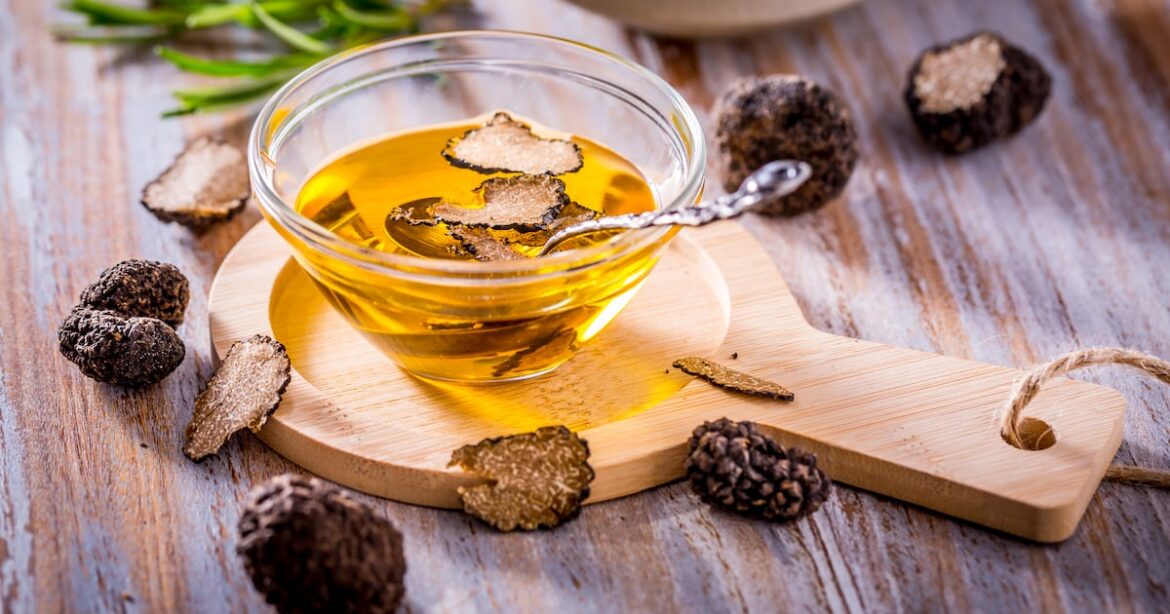In the world of culinary arts, luxury ingredients have long been reserved for fine dining establishments and high-end restaurants. Truffles, caviar, saffron, and Wagyu beef are often associated with opulence, with their renowned scarcity and high price tags positioning them as a rare treat.
However, in recent years, there’s been a noticeable shift: luxury ingredients are becoming more commonplace in home kitchens, creating a revolution in the way we think about and prepare food. But how did this shift happen, and what does it mean for the modern-day food lover?
According to Custom Market Insight, in 2024, the global luxury food market was valued at approximately $194.1 billion and projections indicate that by 2033, this market will reach around $702.69 billion, demonstrating a CAGR) of 17.45%. This is evident in specific products with sales of premium extra virgin olive oil increasing by 15%, and Cornish salt flakes seeing a 79% rise year-on-year, indicating a consumer shift towards high-quality pantry essentials.
The rise of celebrity chefs, cooking shows, food blogs, and social media platforms has made gourmet cooking more visible and achievable, all of which are boosting the profile of luxury ingredients to the everyday cook.
Chefs like Gordon Ramsay, Massimo Bottura and José Andrés have brought once-elite ingredients into the homes of millions. And, with the help of influencers and food critics, people are becoming increasingly curious about these high-end ingredients and eager to try them in their own culinary creations.
The modern consumer is also more aware of the origins of their food, seeking out unique ingredients that offer both superior taste and sustainability. As people grow more interested in ‘food culture’, the lines between casual dining and gourmet meals have become blurred, making luxury ingredients seem more like a natural part of everyday cooking.
And of course, with far-off foodie destinations becoming more accessible to the keen traveller, many are keen to replicate their overseas gastronomic experiences in the comfort of their own home.
The influence of online shopping and e-commerce
Technology and e-commerce have also made luxury ingredients more accessible. Websites like Goldbelly, Eataly and speciality food markets have allowed consumers to order items that were once only available in select restaurants or local gourmet shops.
From truffle oils to foie gras, luxury items can now be delivered straight to your door and home cooks no longer need to leave their kitchens to experiment with the best ingredients the culinary world has to offer.
Additionally, many ingredient producers have expanded their offerings through direct-to-consumer models, creating an easier way to access rare ingredients. Companies selling items such as aged balsamic vinegar, speciality salts, or exotic spices are tapping into the demand for luxury products at affordable prices, further fuelling the trend of home cooking with premium ingredients.
Affordable luxury: A paradigm shift
Although many luxury ingredients remain expensive, there has been a shift in how we view them. Ingredients that were once considered rare or reserved for extravagant occasions are now more frequently used in everyday dishes.
Take caviar, for example, in the past, it was synonymous with lavish banquets or special celebrations. But now, there are smaller, more affordable varieties of caviar available, often marketed for casual at-home gatherings or as a topping for simple dishes like scrambled eggs or avocado toast.
Similarly, truffle – once seen as a high-end splurge – has found its way into home kitchens through less expensive alternatives, such as truffle-infused salts or truffle-flavoured condiments. These products provide the distinct taste of truffles without the steep price tag, allowing home cooks to add a touch of luxury to everyday dishes like pasta or pizza.
The Be Truffle range includes everything from sliced and whole truffle, truffle butter, truffle honey, truffle salts, truffle powder and truffle-based olive oils but unlike other truffle ranges, the brand stands out from the crowd by also injecting new life into everyday sauces such as mayonnaise, ketchup, BBQ, sweet chili, soy and mustard – blending in the perfect amount of truffle to deliver a truffle twist on trusted favourites.
Culinary creativity and experiential dining
Another key factor in the rise of luxury ingredients in home kitchens is the desire for unique and experiential dining at home. With the growing popularity of food as a form of entertainment, people are becoming more adventurous in their cooking. The use of luxury ingredients is no longer seen as an extravagant indulgence, but rather as an opportunity to transform an ordinary meal into a one-of-a-kind experience.
The pandemic was a catalyst in promoting home cooking and gastronomic experimentation and this trend continues with home cooks increasingly looking for ways to elevate their everyday meals, whether it’s adding a drizzle of luxurious truffle honey over a cheese board, or incorporating a few strands of saffron into a homemade risotto.
Ingredients that were once reserved for professional chefs are now seen as tools of the trade available to the home cook, allowing enthusiasts to push the boundaries of creativity in the kitchen.
Luxury ingredients are here to stay
The democratisation of luxury ingredients is reshaping the culinary landscape, making once rare products more accessible and inviting home cooks to step up their game. With the influence of social media, online shopping, and a growing focus on sustainable sourcing, luxury ingredients are becoming a staple in many kitchens, offering home cooks the opportunity to elevate their meals with the best that the culinary world has to offer.
As we continue to evolve in our appreciation for high quality food, it’s clear that luxury ingredients are no longer confined to the elite – they’re now a part of everyday cooking for anyone who wants to experiment with flavour, creativity, and culinary craftsmanship.
Also read → Unions warn against job losses after Greencore £1.2bn acquisition of Bakkavor

